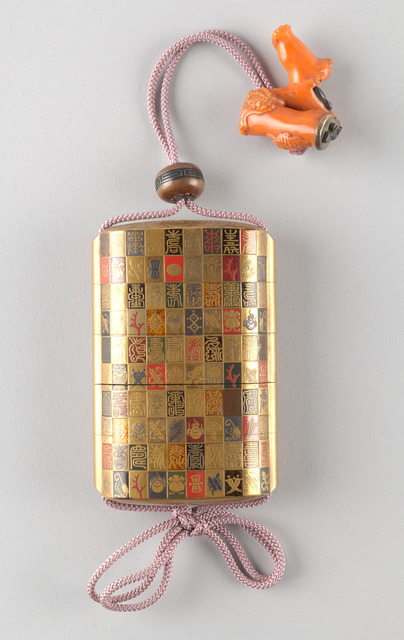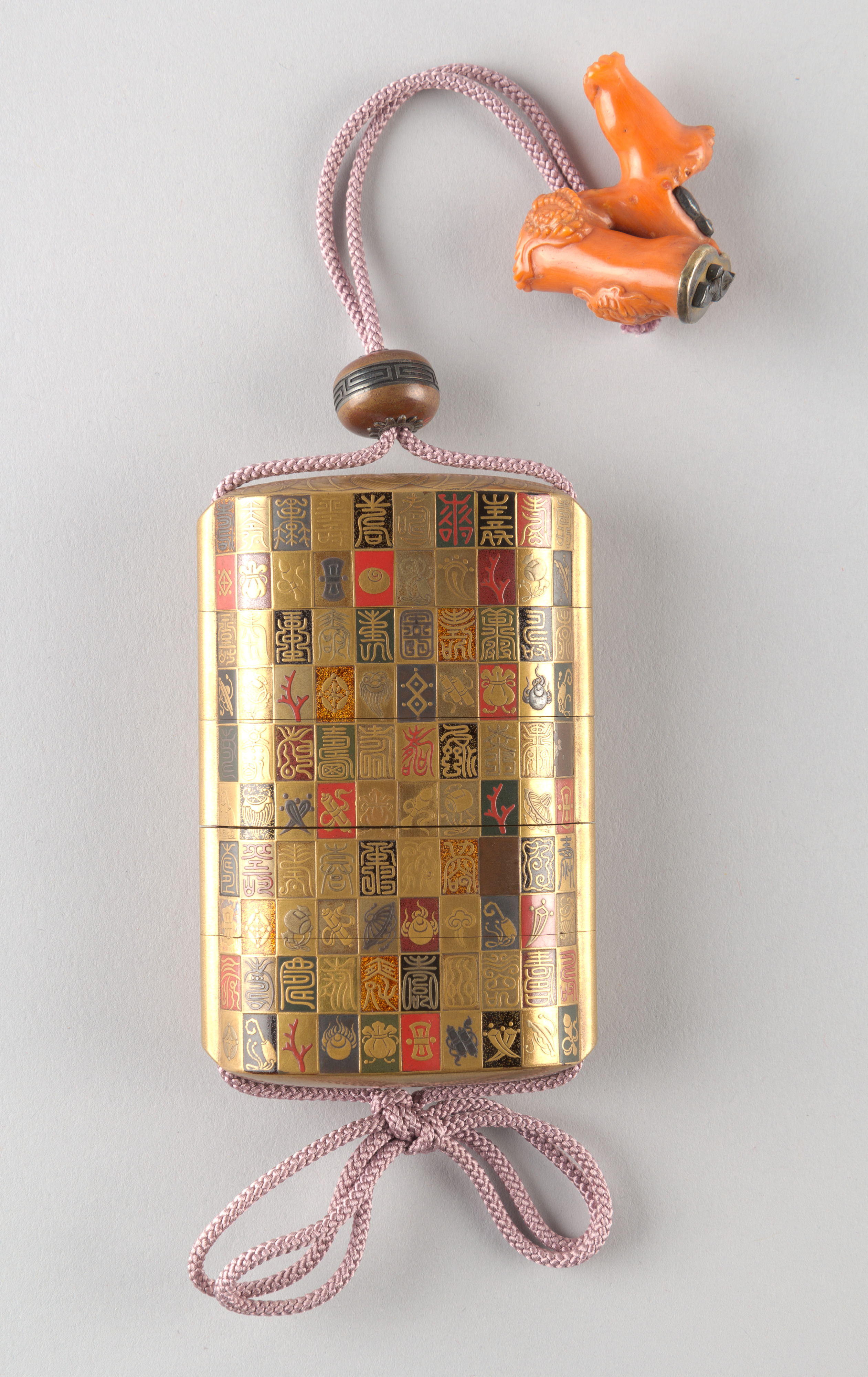Inrō with the Characters for Longevity and Good Fortune and the “Seven Lucky Characters” on Checkerboard Ground, late 18th century

Full description
In the middle of the Edo period, inrō grew in popularity as men’s accessories and were eventually collected by wealthy members of the merchant and samurai classes as pieces of art. The inrō is a traditional Japanese case that hangs from one’s waist, meant for carrying small personal belongings such as a seal or medicine. An inrō was attached to one’s obi (sash) using a netsuke, a small fastener that often held artistic value and/or cultural significance. This inrō features incredibly detailed brushwork on top of a checkerboard pattern, with characters for longevity and good fortune that would act as a sort of good luck charm for its owner. The netsuke is a piece of carved coral – a rare and expensive material in Edo Japan. As the inrõ became increasingly popular, the designs became more intricate and the material became more precious, acting as a marker of status for its wearer. The inrõ was especially popular among the wealthy merchant class, who could display their wealth and status through its high artistic value without breaking any sumptuary laws. Towards the end of the Edo period, inrō were frequently collected as valuable pieces of art rather than wearable accessories, but still marked the evolution of men’s fashion in the Edo period into a more decorative and on-trend aesthetic.
Ruby Barone. Image courtesy of the Metropolitan Museum of Art.
Comments
to view and add comments.
Annotations
No one has annotated a text with this resource yet.
- typeImage
- created on
- file formatjpeg
- file size3 MB


